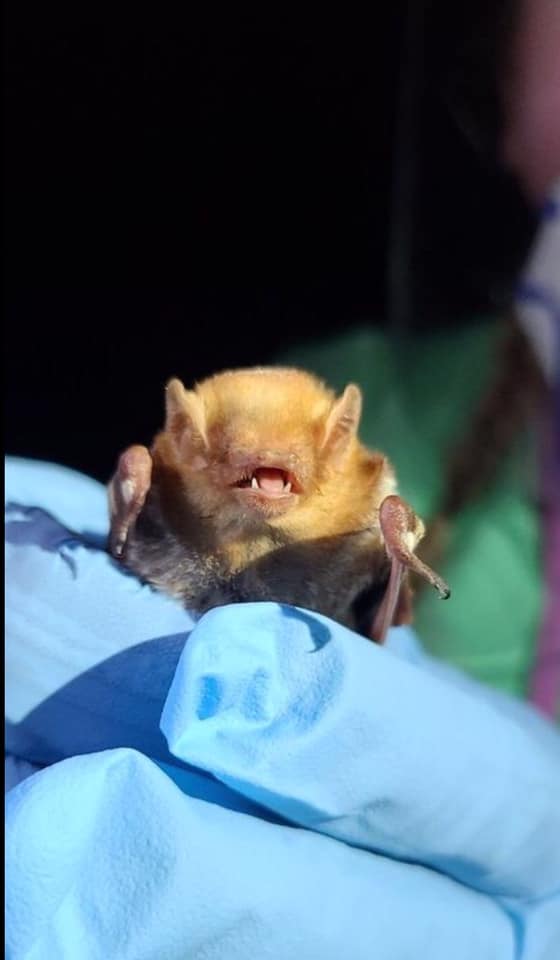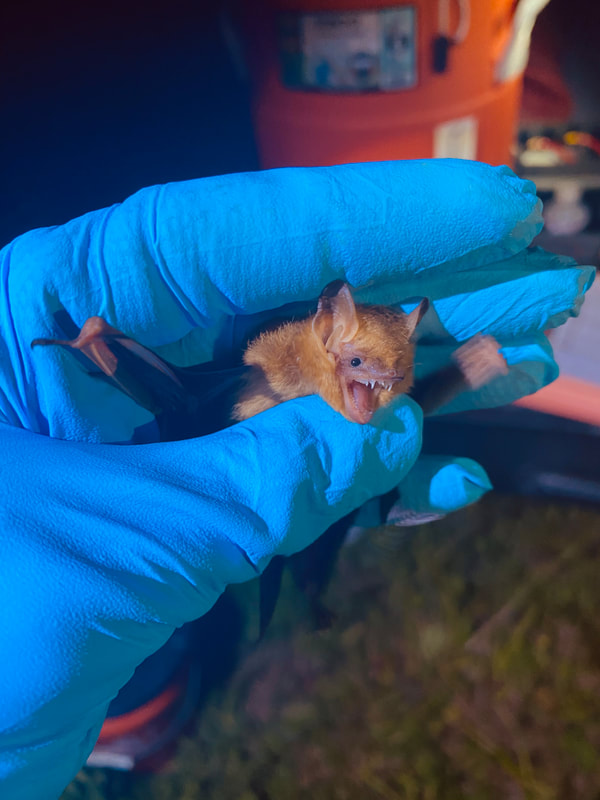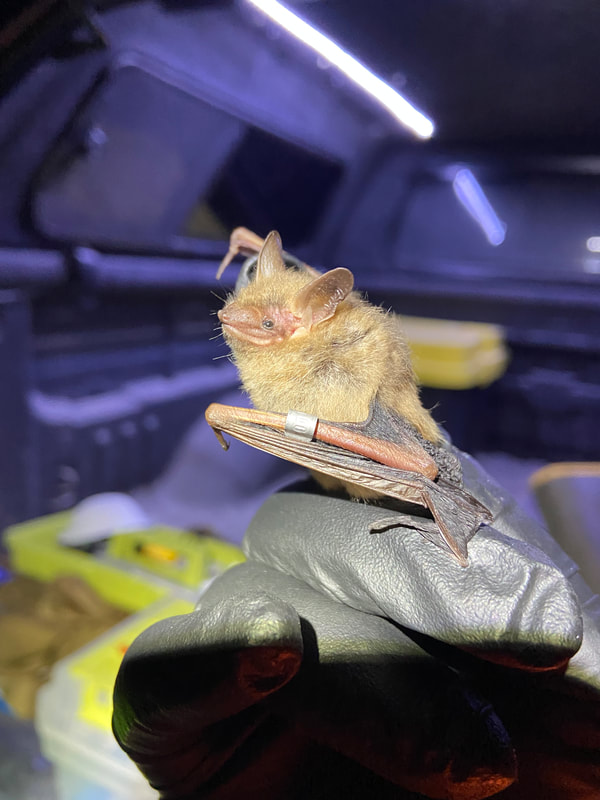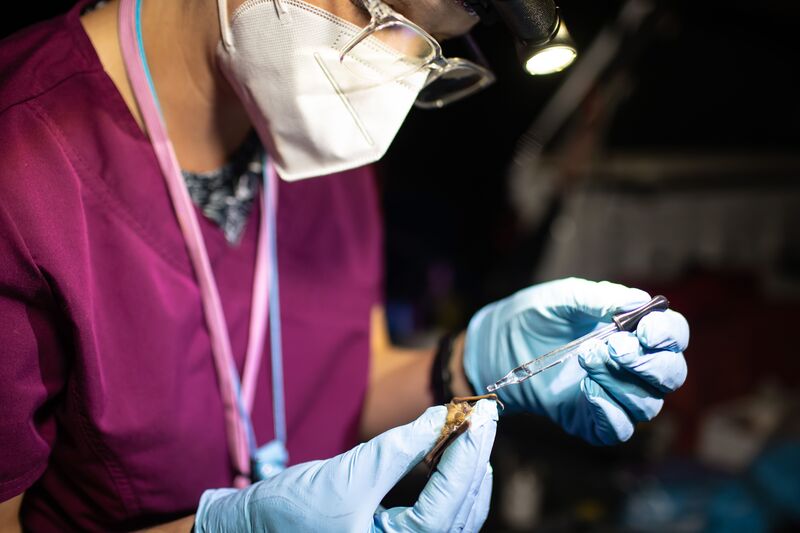White-nose syndrome, winter duration, and pre-hibernation climate impact abundance of reproductive female bats
M.S. thesis research
With variability in local and regional susceptibility to WNS, it is important to assess the combined impacts of hibernation behavior, local climate, and winter duration on the energetics of reproduction. Pre-hibernation climate conditions and the duration of winter can greatly influence the survival rates of overwintering bats. In this study, we used data from four states over a 30-year period across the southeastern U.S. to test competing hypotheses that describe disease impacts on the number of reproductive females in bat populations with respect to WNS.
This work was in collaboration with Fort Campbell Fish and Wildlife.
This work was in collaboration with Fort Campbell Fish and Wildlife.
Summer roost-site selection of the tricolored bat (Perimyotis subflavus)
Co-author
The objective of this study was to measure roost site selection during the summer for tricolored bats (Perimyotis subflavus), a recently petitioned bat species. We examined multiple variables of roost trees using conditional logistic models and found overwhelming support for roost tree height. These results are helpful for management of this species.
This work was led by graduate student Sarah Zirkle at Austin Peay State University in Clarksville, Tennessee.
This work was led by graduate student Sarah Zirkle at Austin Peay State University in Clarksville, Tennessee.
Hibernation behavior of tricolored bats in Texas culverts
Co-author
While tricolored bats are severely impacted by WNS throughout their range, we have yet to confirm WNS from any tri-colored bat from any location in Texas, despite the presence of the fungus that causes WNS throughout the state. Given we have observed variation in hibernation behavior in tri-colored bats, it is critical to understand the impacts these behaviors have on hibernation energetics, pathogen dynamics, and the mechanisms that allow Texas tri-colored bats to avoid WNS. Our long-term goal is to understand the bioenergetics and roosting requirements of tri-colored bat i in east Texas and thereby develop the best possible conservation approaches for this unique population of bats that may act as a source population. This study will help to not only understand hibernation in this specific location, but also shed light on the flexibility of hibernation behaviors across all hibernators in mild and variable climates. To achieve these goals, we are using passive monitoring techniques and bioenergetic modeling that we will compare to previous work from bat species (tri-colored and others) in colder climates. More broadly, this project will provide information about the common traits of apparently unaffected populations, and thus will help explain differential susceptibility on an individual and species level.
This work is led by current graduate student Leah Crowley at Austin Peay State University in Clarksville, Tennessee.
This work is led by current graduate student Leah Crowley at Austin Peay State University in Clarksville, Tennessee.





